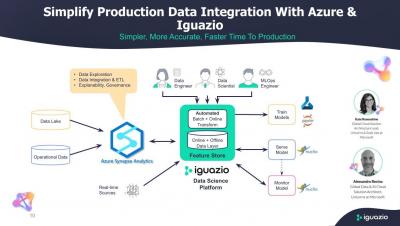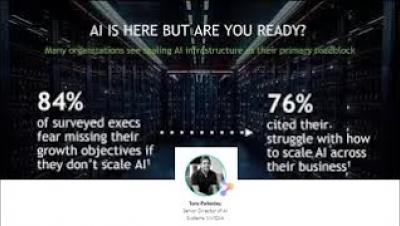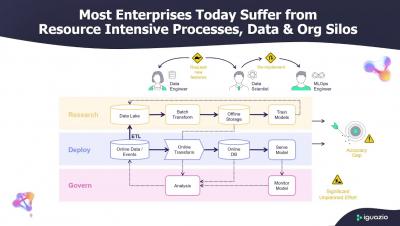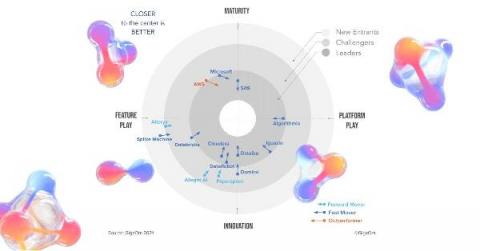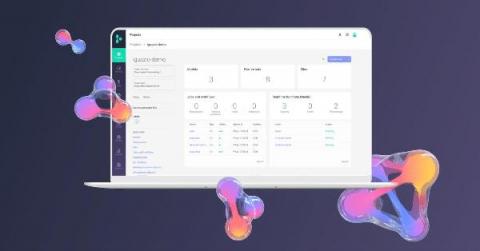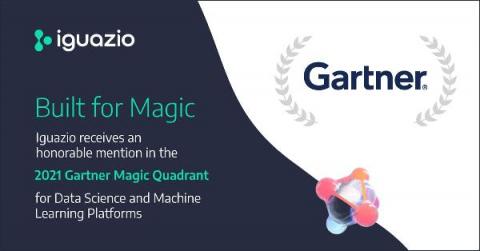Systems | Development | Analytics | API | Testing
Iguazio
Industrializing Enterprise AI with the Right Platform - MLOps Live #9 - With NVIDIA
Simplifying Deployment of ML in Federated Cloud and Edge Environments - MLOPs Live #12 - with AWS
How Feature Stores Accelerate & Simplify Deployment of AI to Production MLOPs Live #13
The breakdown:
00:00 - Intro
02:15 - MLOps Overview
05:03 - Feature Engineering
07:44 - MLOps Workflow
10:44 - Solution: Feature Store
14:25 - Feature Store Competitive Landscape
17:03 - Features of a Feature Store
21:01 - CTO: Feature Store Sneakpeak
25:55 - Python Code example
27:57 - ML Pipeline example
30:07 - Covid-19 Patient Deterioration
33:26 - LIVE DEMO
52:45 - QA
Iguazio Named A Fast Moving Leader by GigaOm in the 'Radar for MLOps' Report
At Iguazio, we’ve spoken and written at length about the challenges of bringing data science to production. The complexity of operationalizing ML can generate huge costs in terms of work hours and compute resources, especially as successful projects get scaled up and expanded. We’re proud to share that the Iguazio Data Science Platform has been named a fast moving leader in the GigaOm Radar for MLOps report.
Announcing Iguazio Version 3.0: Breaking the Silos for Faster Deployment
We’re delighted to announce the release of the Iguazio Data Science Platform version 3.0. Data Engineers and Data Scientists can now deploy their data pipelines and models to production faster than ever with features that break down silos between Data Scientists, Data Engineers and ML Engineers and give you more deployment options . The development experience has been improved, offering better visibility of the artifacts and greater freedom of choice to develop with your IDE of choice.
How to Tap into Higher-Level Abstraction, Efficiency & Automation to Simplify your AI/ML Journey
You’ve already figured out that your data science team cannot keep developing models on their laptops or a managed automated machine learning (AutoML) service and keep their models there. You want to put artificial intelligence (AI) and machine learning (ML) into action and solve real business problems.
Iguazio Receives an Honorable Mention in the 2021 Magic Quadrant for Data Science and Machine Learning Platforms
We’re proud to share that Iguazio has received an honorable mention in the Gartner Magic Quadrant for Data Science and Machine Learning Platforms, 2021. This is the second year in a row that Iguazio receives this recognition. The 2021 report assesses 20 vendors of platforms enabling data scientists and engineers to develop, deploy and manage AI/ML in the enterprise, across a wide array of criteria relating to their capabilities, performance and completeness of vision.
Concept Drift Deep Dive: How to Build a Drift-Aware ML System
There is nothing permanent except change. In a world of turbulent, unpredictable change, we humans are always learning to cope with the unexpected. Hopefully, your machine learning business applications do this every moment, by adapting to fresh data. In a previous post, we discussed the impact of COVID-19 on the data science industry.


